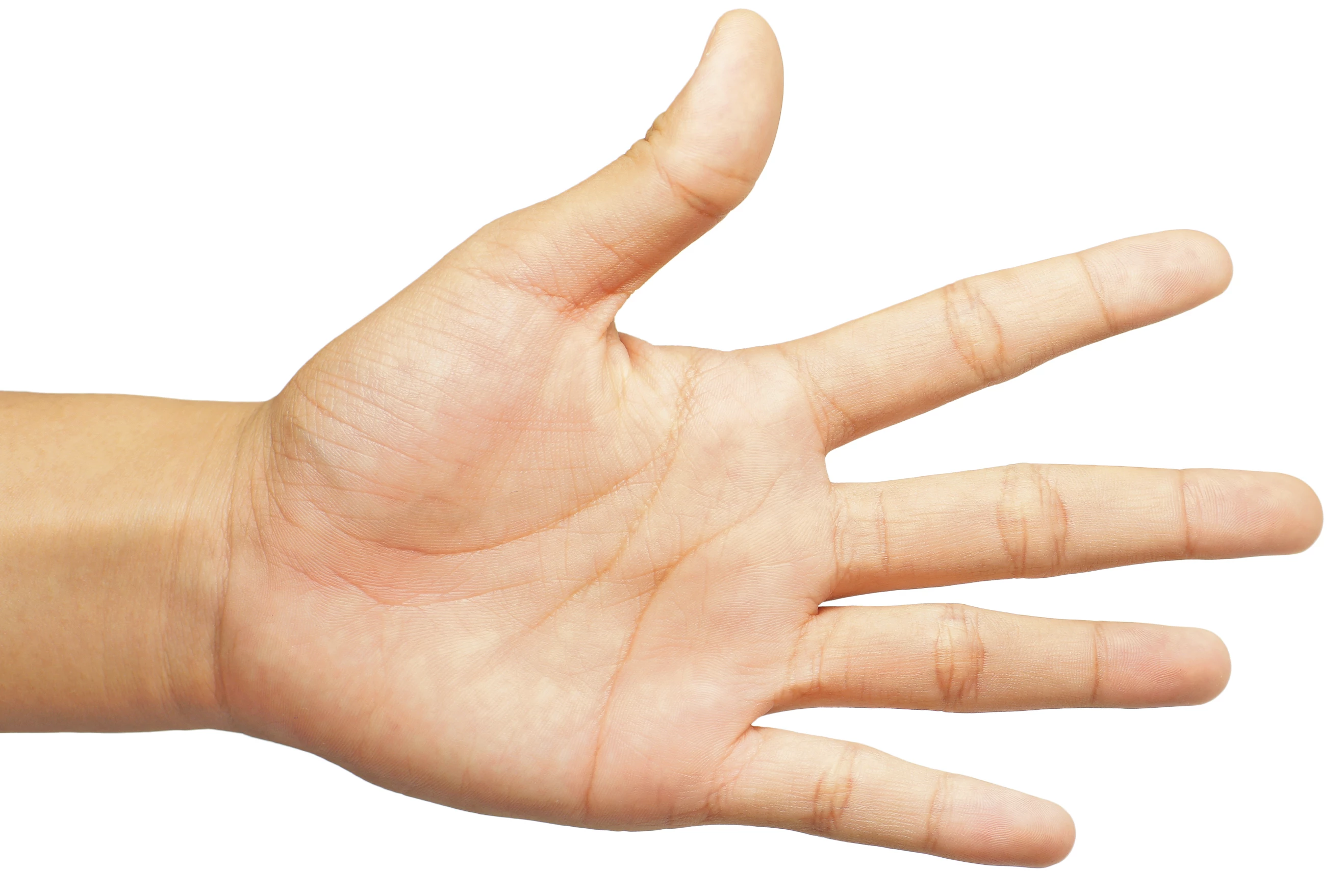For people with coronary heart disease, regular monitoring of bloodstream cholesterol levels is essential – and it typically requires the drawing of blood samples. A new system, however, is claimed to provide the same data simply by imaging the skin of the hand.
The novel setup was developed by scientists from the Chinese Academy of Sciences and the University of Science and Technology of China.
Clinicians start by using an alcohol swab to clean the palm skin on the patient's non-dominant hand, since its skin is softer and easier to "read" than that of the more often-used dominant hand. They subsequently stick a plastic adhesive-backed ring onto the cleaned area, then get the patient to place their hand on a scanner, so the ring aligns with a lens on the device.
By analyzing the manner in which the skin absorbs and scatters light, the scanner proceeds to ascertain the skin's default spectral signature. Next, a special reagent chemical is added to the space inside the ring, so that it coats the skin. After the excess reagent is cleaned out, the skin in then re-scanned.
This time, the chemical causes any cholesterol that's present in the skin oil to fluoresce, altering the skin's spectral signature. By analyzing the differences between the default and the altered signatures, it's possible to determine the patient's skin cholesterol levels, which correspond to those in the bloodstream.

The technology has been proven accurate when tested on 121 patients with acute coronary syndrome, the bloodstream cholesterol levels of whom had already been measured via traditional methods. It is now hoped that the system could be used for long-term non-invasive monitoring of such patients.
"Just put your hand on, and the system will tell you the cholesterol data," says the lead scientist, the Chinese Academy of Sciences' Prof. Wang Yikun. "As cholesterol is one of several types of fats (lipids) that play an important role in your body, we can track your fats in this simple way."
A paper on the research was recently published in the journal Lipids in Health and Disease.
Source: Chinese Academy of Sciences




